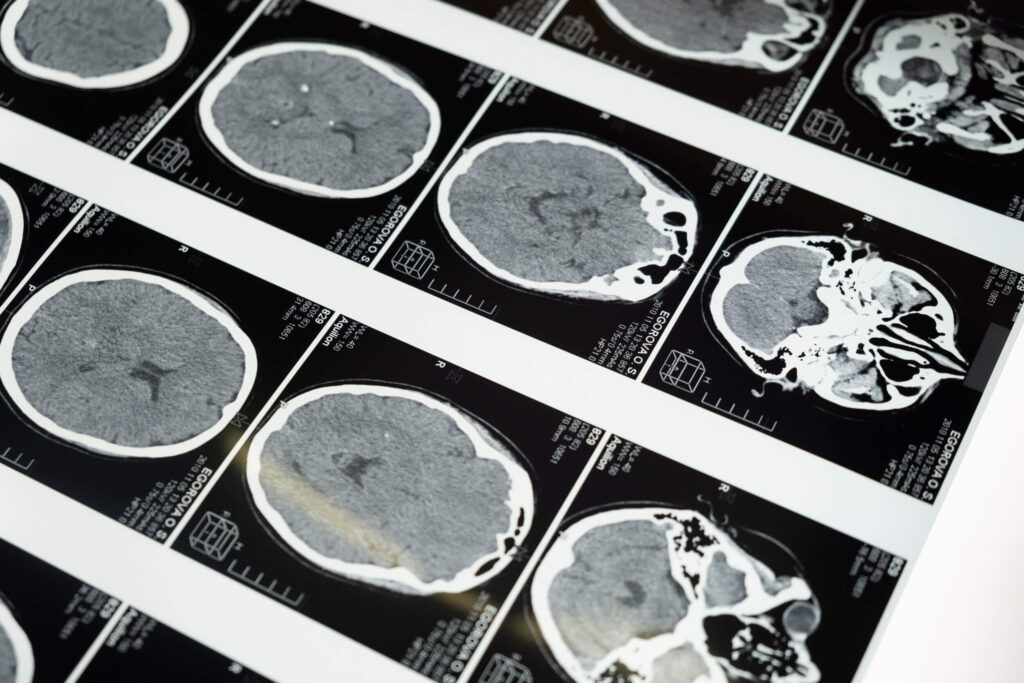The Vagus nerve also called X cranial nerve or 10th cranial nerve is the longest and most complex of the cranial nerves. The vagus nerve runs through the face and thorax to the abdomen.
It is a mixed nerve that contains parasympathetic fibres. The word ‘vagus’ is derived from the Latin word, ‘wandering’. It is fittingly called the wanderer nerve because of its long path in the body.

Highlights
- The vagus nerve runs from the brain through the face and thorax to the abdomen.
- Research suggests that the vagus nerve bidirectionally connects many peripheral metabolic organs with the brain and plays a significant role in body weight and glucose homeostasis among other functions.
- After eating, blood sugar levels rise. Insulin released by the pancreas helps the cells to absorb blood sugar for energy and storage.
What is Vagus Nerve?
The inferior ganglion gives off two branches: the pharyngeal nerve and the superior laryngeal nerve. The recurrent laryngeal nerve branches from the vagus nerve in the lower neck and upper thorax innervate the muscles of the larynx(voice box).
The vagus nerve has two sensory ganglia (masses of nerve tissue that transmit sensory impulses): the superior and the inferior ganglia. The branches of the superior ganglion innervate the skin in the concha of the ear.
The vagus nerve also gives off cardiac, esophageal, and pulmonary branches. In the abdomen, the vagus nerve innervates the greater part of the digestive tract and other abdominal viscera.
The sensory and motor functions of the vagus nerve include providing somatic and sensory sensation information for the heart, esophagus, lungs, digestive tract, and parts of the ear; and stimulation of muscles in these areas.
Stimulation of the muscles of the heart helps to lower resting heart rate while stimulation of the digestive tract allows food to move through the tract.
Damage to the vagus nerve can have a range of symptoms like loss of the gag reflex, unusual heart rate, and paralysis of the vocal chord, depending on the part of the damaged nerve.
Why is Vagus Nerve so Important?
The Vagus nerve is referred to as the information superhighway. Since it originates in the brain and has pathways to almost every organ in the body, researchers are looking to see if stimulation can help other conditions.
An important function of the vagus nerve is transmitting and/or mediating sensory information from throughout the body to the brain. The brain then interprets the information and transmits commands back to the body with the help of the vagus nerve.
Research suggests that the vagus nerve bidirectionally connects many peripheral metabolic organs with the brain and plays a significant role in body weight and glucose homeostasis amongst other functions (as discussed further).
The role of the vagus nerve in the nervous system is responsible for its perception in health culture as the ‘key to well-being.’
1. Vagus nerve and the autonomic nervous system
The autonomic nervous system can be fragmented into the sympathetic nervous system and the parasympathetic nervous system.
The former is responsible for the stress response or the fight or flight response and the latter activates the rest and digest mode that regulates the relaxation response.
The autonomic nervous system (ANS) controls and regulates the function of various organs, glands, and involuntary muscles throughout the body (e.g., vocalization, swallowing, heart rate, respiration, gastric secretion, and intestinal motility).
The vagus nerve is composed of 20% “efferent” fibres (sending signals from the brain to the body) and 80% “afferent” (sensory) fibres (carrying information from the body to the brain).
Many people have an underactive parasympathetic nervous system and an overactive sympathetic nervous system.
According to the polyvagal theory, the vagus nerve has two branches – dorsal and ventral. The ventral vagal nerve activates the parasympathetic nervous system (the agreeable relaxation response) while the dorsal vagal nerve can cause the freeze or dissociation response.
Sometimes the vagus nerve overreacts to certain stress triggers
- Exposure to extreme heat
- Fear of bodily harm
- The sight of blood or having blood drawn
- Straining, including trying to have a bowel movement
- Standing for a long time
The vagus nerve stimulates certain muscles in the heart that help to slow heart rate. When it overreacts, it can cause a sudden drop in heart rate and blood pressure, resulting in fainting. This is known as vasovagal syncope.
It is a parasympathetic overcompensation to deal with a stress response.
Vagus nerve stimulation is known to lead to a decrease in activity in the areas of the brain that causes physiological responses to stress and panic, including the locus coeruleus nuclei in the pons (the main site of the stress hormone, norepinephrine).

2. Vagal Tone & Heart Rate Variability(HRV)
Vagal tone (vagus nerve activity) reflects the ratio between sympathetic and parasympathetic signals, and thereby how well the vagus nerve is functioning. This information can be measured using an electrocardiogram (ECG) to assess heartbeat patterns.
When you breathe in, your heart beats faster to circulate oxygenated blood around your body. As you breathe out, your heart rate slows down. The vagus nerve plays a vital role in regulating the heart’s flexibility to adapt to such situations.
Heart rate variability (HRV) is the variation in the time interval between consecutive heartbeats in milliseconds. An increased vagal tone is generally associated with a lower heart rate and a higher HRV.
Heart rate variability (HRV) in healthy people can be significantly increased via VNS, indicating a shift from sympathetic activity to parasympathetic activity.
The vagus nerve is responsible for controlling the heart rate via electrical impulses to specialized muscle tissue—the heart’s natural pacemaker—in the right atrium, where acetylcholine release slows the pulse. Measuring HRV can offer clues about the resilience of your heart and vagus nerve.
Vagal response decreases with age and some people have a more robust vagal tone than others. This may mean they are able to relax more quickly and easily following a stressful situation.
A study suggests that if you have a strong vagal tone, your body is able to regulate blood glucose levels optimally, translating to a reduced risk of diabetes.
A low vagal tone means the vagus nerve isn’t functioning the way it should. This may lead to a heightened stress response (where the nervous system goes into overdrive) which becomes chronic, possibly resulting in depression, anxiety, gut issues and inflammation.
3. Vagus Nerve & Metabolic Health
Metabolic health is defined as having ideal levels of blood sugar, triglycerides, high-density lipoprotein (HDL) cholesterol, blood pressure, and waist circumference, without using medications.
Experts believe that damage to the vagus nerve may also cause a condition called gastroparesis, which can lead to disruption of metabolic health. It is most often caused by metabolic disorders like hypothyroidism.
This condition affects the involuntary contractions of the digestive system, which prevents the stomach from properly emptying. It is also known to cause unexplained weight loss and fluctuations in blood sugar – both being markers of metabolic health.
4. Vagus Nerve, Glucose Metabolism and Cytokine Synthesis
Insulin is a hormone created by the pancreas that controls the amount of glucose in a person’s bloodstream at any given moment. It helps store glucose in the liver, fat, and muscles, and regulates the body’s metabolism of carbohydrates, fats, and proteins.
After eating, blood sugar levels rise. Insulin released by the pancreas helps the cells to absorb blood sugar for energy and storage. With this absorption, glucose levels in the bloodstream begin to decline.
The pancreas then produces glucagon, a hormone that prompts the liver to release stored sugar. This interaction of glucagon and blood sugar ensures stable blood glucose levels in the body and the brain.
The cells of individuals who have insulin resistance don’t respond well to insulin, barring glucose from entering them with ease. The glucose level in their blood rises over time even as their body produces more insulin as the cells resolutely resist insulin.
To understand the role of vagal stimulation, one has to comprehend the stress response and the excessive release of cytokines (cell signaling molecules) as byproducts of post-traumatic stress reactions.
The catabolic impact is directly proportional to the amount of stress. The main change in the subsequent metabolic status is the reduction of the normal anabolic effects of insulin, i.e., the development of insulin resistance.
Intensive catabolic reactions usually are detrimental to the body. The catabolic state associated with the destruction of muscle tissue and reduction of energy storage will lengthen the recovery time.
Faster recovery after surgery/trauma is achieved by elimination of the negative metabolic effects with reduction of catabolic response and maintaining metabolic equilibrium.
Cytokine synthesis is an essential component of the innate immune system, but inappropriate, excessive production results in a generalized systemic inflammatory response.
The inflammatory response (inflammation) takes place when tissues are injured by bacteria, trauma, toxins, heat, or any other cause. Stimulation of the vagus nerve can play a vital role in debilitating cytokine production.
Anabolism and catabolism are essential processes of metabolism.
Catabolism breaks larger structures like proteins, fats, or tissues down into smaller units such as cells or fatty acids. Anabolism is antithetical to catabolism.
It bonds smaller units like nutrients, cells or amino acids together. Anabolism centres around growth and building. It refers to a set of metabolic pathways that organize and construct small, simple molecules into large complex ones.
Catabolism is all about ‘breaking down’ while anabolism refers to the processes of ‘building up’.
5. Vagus Nerve and Insulin Sensitivity
According to this study, it was found that vagal stimulation induces an increase in whole-body glucose uptake that leads to improved insulin sensitivity which itself resulted in a reduction in fasting glucose.
It further demonstrated that insulin-mediated hepatic and skeletal muscle glucose uptakes were impaired by obesity and reversed by vagal stimulation. Given the large volume of muscle mass, the restoration of glucose metabolism in the muscle is probably the major quantitative contributor to whole body glucose uptake.
Surprisingly, the reduction of weight gain was much less than the recovery of insulin sensitivity. While the restoration of whole-body insulin sensitivity was almost complete, the reduction in body weight was about 25%. Similar changes were observed for total fat mass but not visceral fat, which was not altered by vagal stimulation.
6. Vagus Nerve and The Inflammatory Reflex
Inflammation is a local, protective response to microbial invasion or injury. It must be fine-tuned and regulated precisely because deficiencies or excesses of the inflammatory response cause morbidity and shorten lifespan.
It is also a critical step in the pathogenesis of insulin resistance. The discovery that cholinergic neurons (a cholinergic neuron is a nerve cell that mainly uses the neurotransmitter acetylcholine (ACh) to send its messages) inhibit acute inflammation has qualitatively expanded our understanding of how the nervous system modulates immune responses.
The nervous system reflexively regulates the inflammatory response in real-time, just as it controls heart rate and other vital functions.
The opportunity now exists to apply this insight to the treatment of inflammation through selective and reversible ‘hard-wired’ neural systems.
“Inflammatory reflex” is a term used to describe the manner in which the vagus nerve is involved in the inflammatory response. Vagus nerve-mediated cholinergic signaling controls immune function and proinflammatory responses through the inflammatory reflex and even reverses metabolic complications.
This reflex is however triggered after consumption of high fat or high carbohydrate meals. Postprandial inflammation typically occurs when a high-fat meal is consumed and triggers an immune response in the gut lining. Chronic inflammation invariably disrupts metabolic health and results in weight gain.
Research suggests that obesity could be caused by an imbalance in the autonomous nervous system. High-fat diets have been indicated to send the parasympathetic nervous system into overdrive.
Since decreased vagus nerve activity in the context of obesity has been reported, these findings raise the intriguing possibility that dysregulation of vagus nerve-mediated signaling might contribute to the pathogenesis of obesity and its related comorbidities like cardiovascular diseases.

7. Vagus Nerve and Liver Function
Research suggests that the vagus nerve stimulation offers protection against liver injury by inhibiting oxidative stress and apoptosis, downregulating inflammatory cytokines, and boosting antioxidative capability in the liver.
Furthermore, it recommends it as a promising adjuvant therapeutic strategy for treating liver injury induced by acute renal injury.
8. Vagus Nerve and the Gut-Brain Axis
The communication system between your gut and brain is called the gut-brain axis. Neurons are cells found in your brain and central nervous system that tell your body how to behave.
There are approximately 100 billion neurons in the human brain. Interestingly, your gut contains 500 million neurons, which are connected to your brain through nerves in your nervous system.
The vagus nerve is one of the biggest nerves connecting your gut and brain. It sends signals in both directions. For example, in animal studies, stress inhibits the signals sent through the vagus nerve and also causes gastrointestinal problems.
Similarly, one study in humans found that people with irritable bowel syndrome (IBS) or Crohn’s disease had reduced vagal tone, indicating a reduced function of the vagus nerve. Both are side-effects of poor metabolic health.
An interesting study on mice found that feeding them a probiotic reduced the amount of stress hormone in their blood. However, when their vagus nerve was cut, the probiotic had no effect. This suggests that the vagus nerve is important in the gut-brain axis and its role in stress.
Stimulation of the Vagus Nerve
Vagal tone refers to an internal biological process that represents the activity of the vagus nerve. Increasing your vagal tone activates the parasympathetic nervous system, and having a higher vagal tone translates into your body relaxing faster after stress.
Vagus nerve stimulation (VNS) refers to any technique that stimulates the vagus nerve, including manual or electrical stimulation. The relationship between depression, anxiety inflammation, metabolic syndrome, and heart disease might be mediated by the vagus nerve.
VNS deserves further study for its potentially favourable effects on cardiovascular, cerebrovascular, metabolic, and other physiological biomarkers associated with depression, morbidity, and mortality.
People can learn to trigger their parasympathetic nervous system to immediately reduce their stress. This also lifts their mood and low blood sugar depression, strengthens their immune system, and reduces their blood pressure.
There are many techniques that a person can use to strengthen and activate their parasympathetic nervous system, causing a relaxation response in their body like meditation, deep breathing, foot massage, loud gurgling, and singing amongst others.
How does Vagus Nerve Stimulation work?
Diaphragmatic Breathing
When you take a deep inhalation, you stretch the fibres around your lungs. That sensory input travels up the vagus to your brain, and triggers a deep exhalation out, which activates the parasympathetic nervous system and calms you down.
Gargling
According to Dr. Navaz Habib, the author of Activate Your Vagus Nerve, gargling for 30 seconds every day with warm water and a bit of salt until there are tears in your eyes activates the vagus function.
This is because that’s an indication that you’re sending a signal to the right part of your brainstem to activate the vagus nerve and you’re using the muscles that the vagus nerve innervates around the vocal cords.
Conclusion
The Vagus nerve is referred to as the information superhighway. Since it has pathways to almost every organ in the body, it plays a crucial role in maintaining good metabolic health.
The vagus nerve carries an extensive range of signals from the digestive system and the organs to the brain and vice versa. It is the tenth cranial nerve, extending from its origin in the brainstem through the neck and the thorax down to the abdomen.
The vagus nerve influences your breathing, digestive function, and heart rate. Heart rate variability is an indicator of the vagal tone.
It is tethered to most of the metabolic biomarkers and plays an important role in glucose homeostasis.
When it becomes damaged, there may be an increased chance of developing problems such as obesity or high blood pressure. Increasing your vagal tone activates the parasympathetic nervous system.
Disclaimer: The contents of this article are for general information and educational purposes only. It neither provides any medical advice nor intends to substitute professional medical opinion on the treatment, diagnosis, prevention or alleviation of any disease, disorder or disability. Always consult with your doctor or qualified healthcare professional about your health condition and/or concerns and before undertaking a new health care regimen including making any dietary or lifestyle changes.
References
- Parasympathetic Nervous System
- The evolving obesity challenge: targeting the vagus nerve and the inflammatory reflex in the response
- Frontiers | Autonomic Modulation for Cardiovascular Disease | Physiology
- Vagal Blocking Improves Glycemic Control and Elevated Blood Pressure in Obese Subjects With Type 2 Diabetes Mellitus
- Response to trauma and metabolic changes: posttraumatic metabolism – PMC








